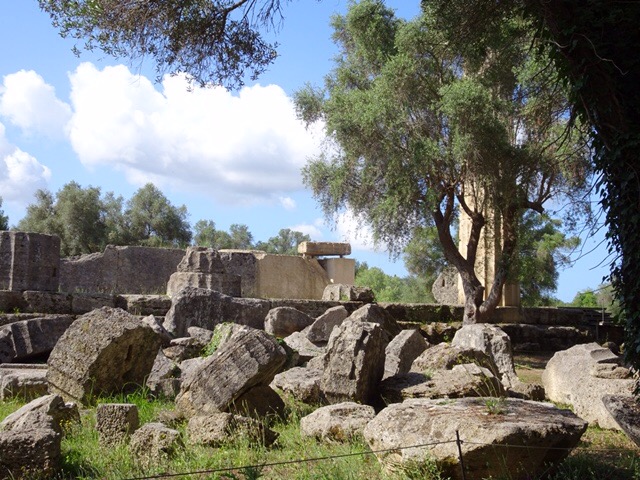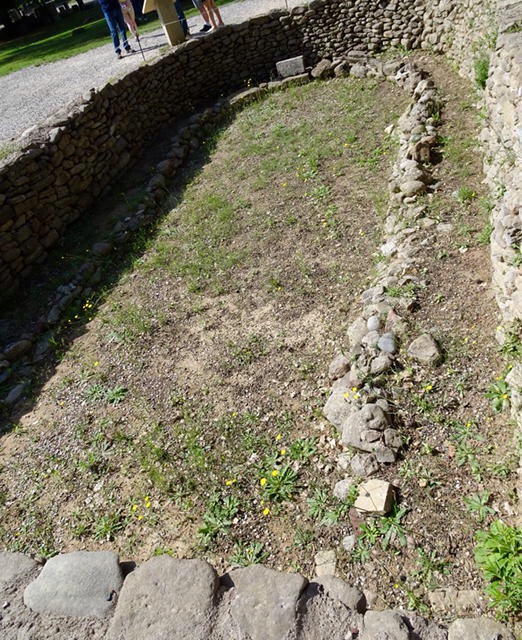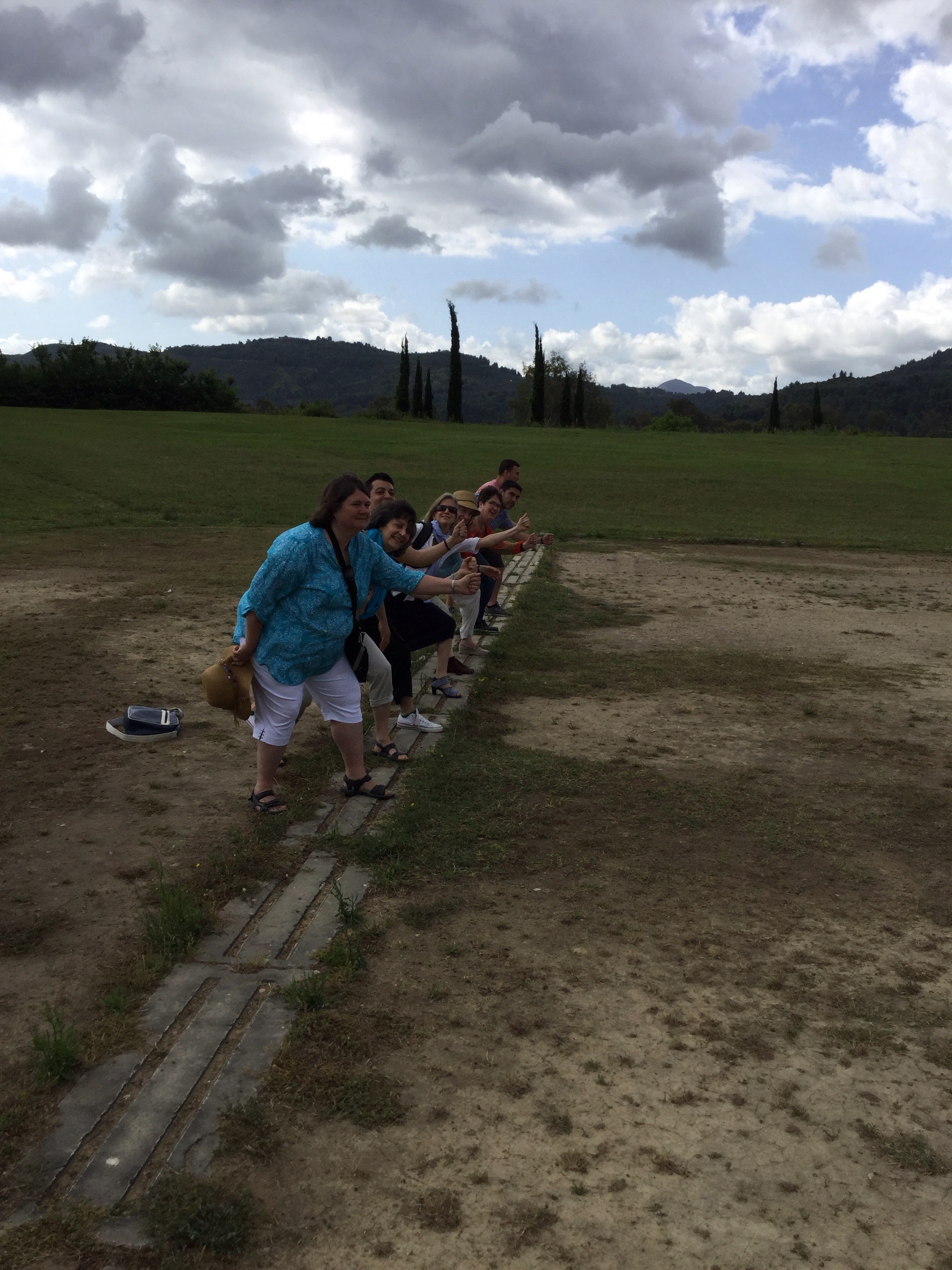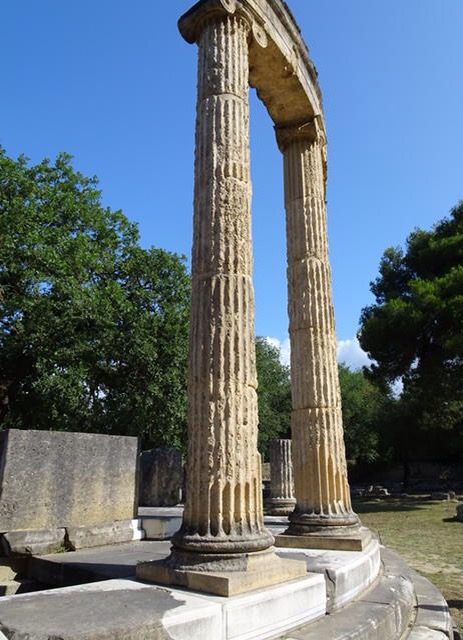Ancient Olympia, home of the Olympic Games, lies near the western coast of the Peloponnese region of Greece. Its most obvious feature–the one that drew busloads of other travelers to compete with our group for elbow room on our visit–is the story it tells about the development of sport in Ancient Greece. In the museum dedicated to sport at the site, you can encounter a layout of the reconstructed grounds, with precisely sized models, and information about the development of these from footraces to numerous other events, or you can walk out into the large grounds to view, say, the huge ruins of the Temple of Zeus, to whom the winners would give offerings of helmets and other implements:

Or you can see the surprisingly unremarkable spot where the Olympic flame is lit:
One of the most fascinating features of the ancient site, however, is how, like other archaeological sites, it testifies to many layers of history. For example, you can find traces of the oldest excavated house on the site, about 2000 years old, with the knowledge that even older remains lie below:

Or you can find the remaining columns of the Philippeion, a temple dedicated to Philip of Macedonia, father of Alexander the Great:
The structure is unusual not only because of its circular shape but also because it was only in 2003-04 reconstructed from remains that had been taken by the Germans and recently repatriated–unlike the Elgin marbles, housed in the British Museum, which have been a source of controversy between Greece and the U.K. for some time.
You cannot avoid the traces of the Romans, either, whose later contributions to the site are apparent to archaeologists in, for example, the use of brick construction rather than stone. The Romans are also memorialized in the archaeological museum, along with the spectacular marble pediment statues of the Temple of Zeus and the statue of Hermes by Praxiteles. Here you can also see the statue of a resplendent Roman emperor. Our guide, Roula, identified this figure as Hadrian, but also noted that the Romans constructed these statues with removable heads so the emperors could be swapped out readily, according to the tides of Roman politics:

You might also stumble across rebuilding in the present moment, as in this column representing the Stoa Poikile along one edge of the grounds. A worker up near the top of the scaffold was using a noisy power tool as we walked by–history being reenvisioned and crafted in front of our eyes.
The goal of the walk through the grounds is to reach the stadium, which is really just a large, level oval–an unavoidable temptation to competitive colleagues, here seen on the starting blocks:

And, finally, you find the sedimentation of history in the unlikeliest of places. Here’s what you might call the “computer console” of the restaurant in Patras where we had our lunch stop on the way from Olympia back to Athens:
Deb



